Artemi Panarin’s warm welcome to the Big Apple is the strawberry atop a New York City cheesecake in the exciting and franchise-altering offseason for the Rangers. His seven-year, $11.642 million contract is a steal considering the reportedly higher offers on the table from the New York Islanders, Colorado Avalanche and Columbus Blue Jackets. Panarin’s substantial impact on the roster makes the contract a win-win on both sides, but that’s not without controversy in the Rangers’ salary cap situation.
Following Kaapo Kakko’s recent entry-level contract announcement, the Rangers still have $7,093,534 in cap space. With plenty of names to still re-sign and Chris Kreider’s future with New York in doubt, Panarin’s arrival will likely force a trade or two before the offseason’s finale.
The Remaining RFAs
Jacob Trouba’s arbitration date has been set for July 25 while Pavel Buchnevich’s will be July 29. That leaves just the Rangers just a few weeks to hand out two key extensions for their upcoming roster. It also gives the Rangers a second buyout period if they so choose to go down that route.
In Trouba’s case, he’ll likely receive an extension that spans around seven-years at an AAV of $7.25 million. Considering Trouba’s tedious past of arbitration cases with the Winnipeg Jets, he won’t settle for a deal that’s less than $7 million a year.
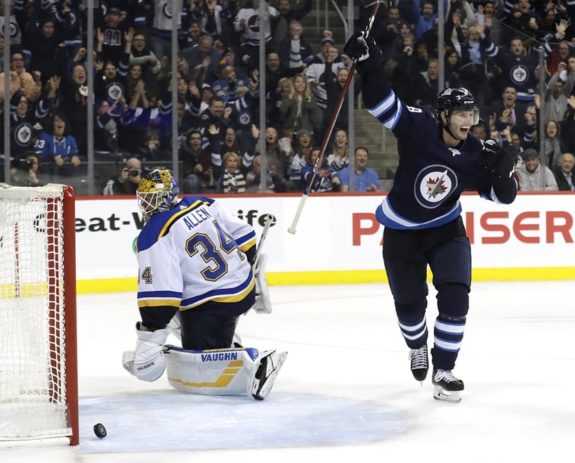
Trouba’s projected extension leaves the Rangers in a bind as they’ll have to free up space to meet the asking price. Additionally, they’ll have minimal space to sign RFAs Buchnevich, Tony DeAngelo, Brendan Lemieux and Vinni Lettieri. Lemieux and Lettieri were due for bridge deals whether the Rangers managed to sign Panarin or not. Buchnevich and DeAngelo are now far less likely to receive a substantial increase in pay or term following the arrival of Trouba and Panarin.
Current projections have those four taking up between $6-8 million in cap space. All in all, the Rangers have just over $7 million in cap space to hand out five separate contracts that will likely cost a collective $13-15 million a year.
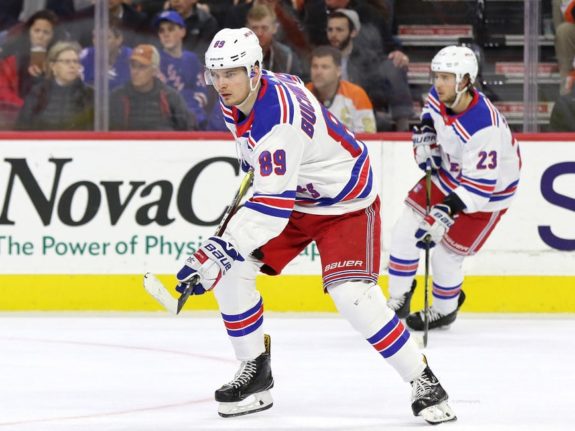
The Trade Candidates
So, what are the Rangers to do in the face of a cap stricken roster? The obvious answer is to trade themselves out of the situation, but that comes at the cost of a downgraded roster. Chris Kreider is the top candidate for a new home after being nearly dealt to the Avalanche at the NHL Draft.
Kreider’s top left-wing spot will undoubtedly go to Panarin. His ice-time and production will take a slight hit but he’s still good for at least 50 points if he is to stay healthy. A winger of his style is a hot commodity, look no further than Anders Lee’s recent extension with the Islanders for evidence of that. With one year left on his contract, it could be smart to shed Kreider’s $4.625 million cap hit. Then again, the Rangers would be sacrificing quite the player in order to re-sign players of lower pedigree, so perhaps that’s not the route Jeff Gorton decides to take.
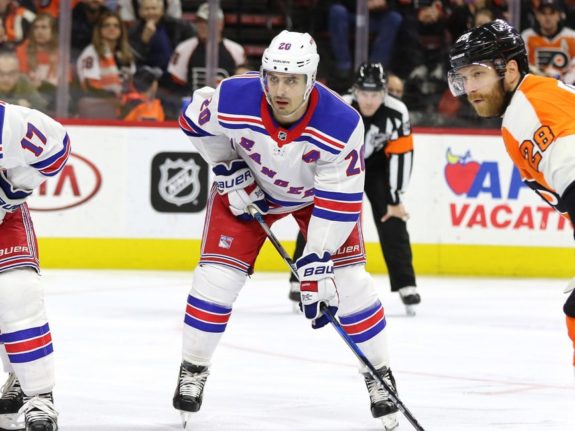
Vladislav Namestnikov is the most ideal candidate for a cap freeing trade. At a cap hit of $4 million with one year left on his contract, he could be a valuable asset for a team starved of versatile forwards. Unfortunately, his 31 points hardly justifies the $4 million AAV, even if it is just for a single season. The value may not be there but some salary retained could be enough for a team to bite.
Ryan Strome’s $3.1 million AAV is another attractive piece to move, but that’d force one of Filip Chytil, Brett Howden, or even Vitali Kravtsov to man the spot of second-line center. None have proven themselves viable of this position and having the security of Strome is crucial for a team full of inexperienced players.
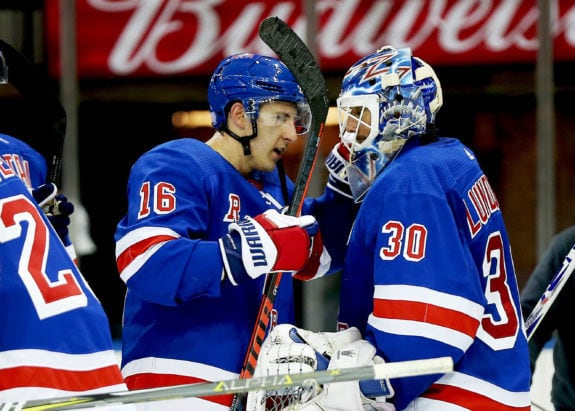
That leaves Kevin Shattenkirk and his $6.65 million cap hit over the next two years. His past season of 28 points in 73 games was a disappointment, not to mention his decrease in possession stats. However, he had been playing through a nagging knee injury which certainly influenced his speed and use of space. The idea of buying out Shattenkirk’s contract is preposterous as the Rangers are still paying for Dan Girardi and Ryan Spooner’s contracts. Retaining 50% of Shattenkirk’s contract in a trade is a possibility but the value still won’t be there from any buyers.
The Second Buyout Window
Speaking of buyouts, let’s talk about the Rangers opportunity with their second window. Brendan Smith still has two years left at a $4.35 million AAV. If buried in the minors, the Rangers would be paying him $3.275 million instead, which will undoubtedly be done at the beginning of the season. If the Rangers were to buy out Smith, $970,833 for this upcoming season, jumps to $3.1 million for 2020-21, then back down to $1.145 million for 2021-2022 and 2022-2023. Following this season, Girardi’s buyout compensation lowers from $3.6 million to $1.11 million until 2023.
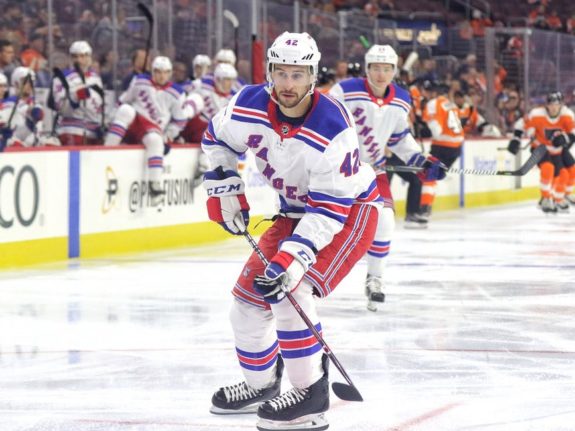
If the Rangers buyout Smith, they would be committing just over $4.2 million in buyout compensation for next season. Not the end of the world considering Kreider, Matt Beleskey, Strome, Namestnikov, Jesper Fast, Boo Nieves and Alexandar Georgiev will all be at the end of their contracts. Among those seven, only two or three are likely to return to the Rangers, if they’re even still on the team.
The other potential candidate would be Marc Staal and his dreadful $5.7 million AAV for the next two years. His contract is likely the worst on the team, making him a prime option for a buyout. Unfortunately, that’d also be committing to quite a sum of money for the next four years. The Rangers would still be paying him $2.9 million this year then another $3.7 million in 2020-21. The next two seasons would then decrease to $1.2 million. Between Smith and Staal, the former is the clear-cut winner in buyout potential.
The Bottom Line
One cannot stress the amount of work it took to bring Panarin to New York on a cost-effective contract. However, his arrival launches a whole new problem for the Rangers front office as it becomes a game of crunching numbers and deciding which route to take. Whether that means trading Kreider or buying out one of their regrettable contracts, the offseason is far from its finale for the Rangers.